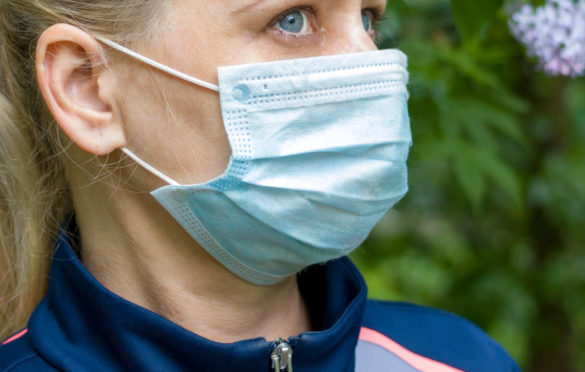
Face masks intended to limit the spread of coronavirus are blocking essential communications for people with hearing difficulties, experts warn.
An online survey by Scottish hearing loss consultancy Ideas For Ears has found three-quarters of respondents experienced difficulties understanding people who are wearing masks.
People with, and without, hearing loss endured muffled voices and unclear speech but, crucially, the hard of hearing were prevented from lip reading.
Social distancing also made it more difficult to hear what was being said, while video conferencing often resulted in confused communications.
Sally Shaw, director of Ideas For Ears, a social enterprise that helps businesses work better with people with hearing loss, acknowledged the need for measures to protect people in a pandemic. But she warned they could “be a burden to people, particularly those with hearing loss, as they seek to stay in touch with family and friends, use important services and navigate workplace communications”.
She said this could result in a “downward cycle of isolation and exclusion”.
Masks with transparent windows for the mouth and live subtitles on video conferencing would, she said, help, along with training for professionals.
GPs have been told by professional bodies to conduct consultations mainly by phone and, if they must do a face-to-face consultation, to wear masks. Dr Andrew Buist, chairman of BMA Scotland’s GP Committee, said: “The mask can obscure facial expressions so I understand it may be difficult for some people, however it is a necessity at this time.” Eileen McKenna, associate director of the Royal College of Nursing in Scotland, said nursing staff were aware of the communication challenges.
She said: “Health and care staff are working hard to minimise the risks to patients and residents. This includes the wearing of masks. Staff will be taking account of the individual’s communication needs and will do the best they can to ensure understanding.”
The Scottish Government said: “It is not mandatory to wear face coverings – simply precautionary. Alternatively, doctors and patients can use paper and pens, laptops or tablets or visuals and symbols to communicate.”
Shadow Health Secretary Miles Briggs has written to the Scottish Government urging that guidance be issued to health boards “to address any communication problems”.

Enjoy the convenience of having The Sunday Post delivered as a digital ePaper straight to your smartphone, tablet or computer.
Subscribe for only £5.49 a month and enjoy all the benefits of the printed paper as a digital replica.
Subscribe